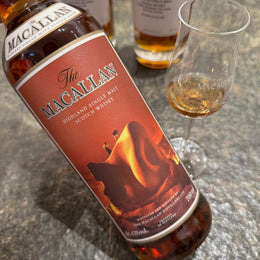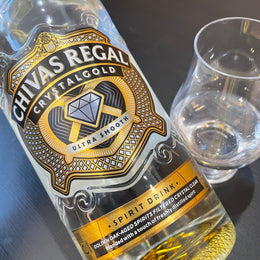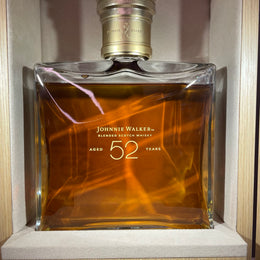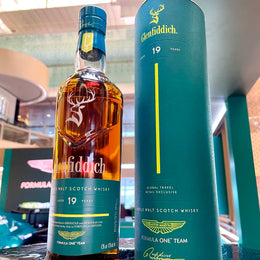FRUITY AND SPICY
Note: We have assigned every bottle we review to one of five Flavour Camps, based on the most dominant flavours found. The Flavour Camps are : (1) Fragrant and Floral, (2) Fruity and Spicy, (3) Malty and Dry, (4) Rich and Round and (5) Smokey and Peaty. To learn more about each Flavour Camp, please click here.
We have something quite different today.
At 88 Bamboo, we promise to try any and everything you would slap the label “whisky” on. We would be trying a single malt. But this does not come from one of the usual suspect countries (Scotland, Ireland, the US or Japan). We would be trying a single malt that was distilled and matured in India. We procured this because we think it would be an interesting experience. Unless you live in India, I bet you wouldn’t have encountered an Indian single malt at your local bar.
And we were more than impressed. This expression has a number of flavours that I quite frankly haven’t experienced in my time drinking whiskies from ordinary whisky-producing regions. Pretty much Aladdin’s whole new world for me. Grab a dram here and hop on my magical carpet!


This could be us if you order a dram.
The Bottle
First thing’s first. The bottle looks great. The liquid is burnished copper and the bottle comes in a cylindrical box and a velvet pouch with tiny bronze bells.
This is a Double Cask expression that is supposedly matured in hand-picked American bourbon barrels and European oak sherry casks.

Bottle Stats
|
Region: Uttar Pradesh, northern India |
Status: Active |
|
Distributor: Original Bottling (OB) |
Classification: Indian Whisky |
|
Style: Single Malt |
Cask: Ex-Bourbon, Ex-Sherry |
|
Age: NAS |
Abv: 45.0% |
Behind the Label
There are a few things to note about the history of Indian whisky-making. Since the end of World War II, the Indian consumer has enjoyed both Scotch whisky and domestically produced whisky.
Interestingly, though, most spirits labelled as whiskies in India (not including the Rampur single malt we are trying today), are not made from barley malt. Spirit makers historically tended to create spirits by fermenting the crops more easily available to them- barley in Scotland and Ireland, corn and rye in the US, and rice in Japan and China. In India, sugarcane is readily available. Therefore, most Indian “whisky” is actually made from extracting molasses from sugar cane, then fermenting the molasses.

In any case, beginning in the early 2000s, reputable Indian spirit makers began focusing on international whisky-making standards and using barley. This led to the creation of Indian single malts- the likes of Amrut- that were discovered and critically-acclaimed by well-known western connoisseurs.

Rampur Distillery itself dates back to the 1940s, however, it had only created its first barley-based single malt whisky in 2019. Rampur is situated in northern India a region exposed to massive temperature changes from (0°C-45°C) and very low humidity. These hot summer temperatures have 2 effects on the whisky: Firstly, warmer temperatures during fermentation can drive the development of more fruit and floral esters with a sweeter profile. Secondly warmer conditions are said to make the whisky mature much faster due to the accelerated interaction between spirit, cask, and air, and done properly, could result in a whisky that portrays itself as smoother and more flavourful at a young age.

Like many Scotch whiskies, the Double Cask expression we have today is matured in relatively straightforward selection of ex-bourbon and ex-sherry casks. How would the Indian climate affect the taste of the whisky? Grab a dram here and then read on to find out!
Tasting notes
In the glass, the liquid is a dark honey colour.
On the nose, it’s almost like nosing an aged rum. Very unexpected and intense ripe tropical fruits immediately hit you- evoking a fruit cocktail of ripe Thai mangoes, rambutans and pink guava at the beach. The ripe fruits are balanced out by almost an equal measure of woodiness, vanilla ice cream and heavily perfumed Indian sandalwood. Slight wood mustiness.
There is also an exotic component of rosewater and syrup, reminiscent of Singaporean or Malaysian ice kacang.
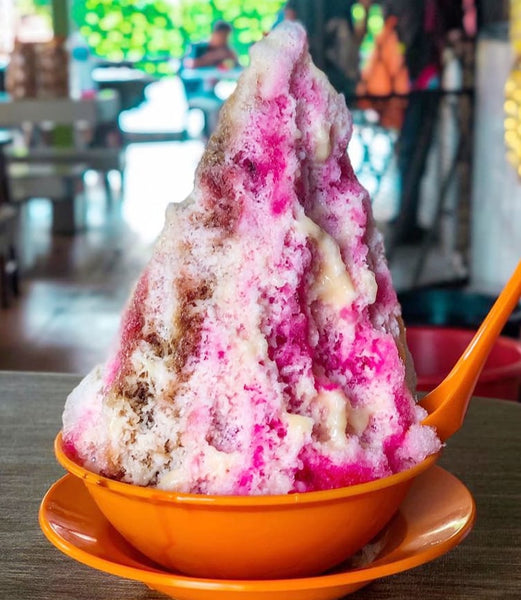
Quite distinctive, bold and sweet aromas that I have never experienced in the comparatively more delicate and shy Scottish or Japanese single malts.
On the palate, rich, fruity and very well-rounded with no alcohol burn at all – probably due to its greatly accelerated maturation in a Northern Indian climate. Components of the tropical fruits mentioned earlier are actually quite soft and gentle on the palate. There is some ripe mangoes, but it is joined by some sweet sherried flavours of strawberry jam, toffee, molasses turning to sweet vanilla. The texture is pleasantly viscous and rich, and these sweet flavours really do linger on the middle of your palate for quite some time.
No mouth–puckering dryness at all. On the contrary there is an ever-present layer of brightness and slight tartness that makes itself known throughout the entire sip.
On a second sip, more oaky flavours come through once again with milk chocolate, polished wood and a distinctive rose syrup element.
The finish is alluringly long with fading oakiness, rose and ripe lychees.

My Take
Full confession: my first reaction to the Rampur was “IS THIS EVEN WHISKY?”
It felt like the Indians have created a distinctive new style of whisky on their own. This has some really bold and rich fruitiness, and some exotic elements of rose and feels stronger than a mere 45.0% (in a good way). Anyone who has not tried Indian single malts should really try this- it’s unlike anything you’ve experienced. Grab a dram at our store!
Could they have sneakily under-declared the ABV? That’s not a concern for me at all.
The intense flavours take a few sips to get used to, but once you adjust to this paradigm, you would really appreciate the well-balanced flavours, smoothness and fruitiness of this Rampur.
Our Rating |
🪐💫I haven't experienced flavours like this in whisky. Simply out of this world. |
A full-flavoured whisky would best-compliment a full-flavoured and savory rogan josh (stewed lamb from the Kashmir region).

Lamb rogan josh with ginger, chili, yoghurt and saffron (Image Source: Maunika Gowardhan UK)
The oil, spice and richness from the lamb would match the juiciness and perfumed oakiness of the Rampur. Just the thought of this combination makes one hungry.

@charsiucharlie



